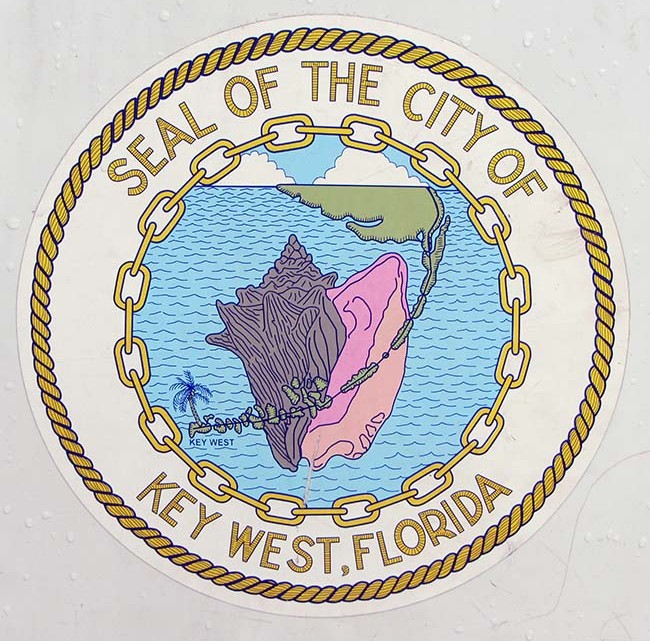New Douglass Gym artwork draws complaints
BY PRU SOWERS
KONK LIFE STAFF WRITER
Dissatisfied with the “generic” nature of $39,400 worth of artwork slated to be installed in the newly-renovated Frederick Douglass Gym on Olivia Street, some residents are asking that the art purchase be delayed in order to incorporate more of the history of Bahama Village.
John Wilson Smith, president of the Frederick Douglass Black Educators Memorial Project, emphasized that he thinks the two art installations selected for purchase by the Key West Art in Public Places board (AIPP) are “beautiful.” However, the two proposed installations – one made of mosaic art glass rectangles and the other a series of painted hardwood panels representing a “Junkanoo Fantasy” – are aimed more at tourists than the residents of Bahama Village, Wilson Smith said. The Black Educators Memorial Project committee is requesting that art representing specific examples of the history surrounding the former Frederick Douglass School and the teachers who taught in the all-black facility be included.
“These [Douglass Gym] walls are sacred. And they should honor the ancestors, the Frederick Douglass black educators, Douglass School and the community for future generations and the city of Key West,” Wilson Smith said. “Soon, the Conchs and the indigenous people, when they return to Key West, the only place we’ll be able to find our history is the cemetery.”
The Douglass Gym on the corner of Emma and Oliva streets has been recently renovated into a recreation and community center, with a gym, locker rooms and a community classroom. But its history goes back almost 150 years. The first Frederick Douglass School, named after one of America’s most famous African-American orators and abolitionist of the 1800s, opened in 1870. Since the Monroe County School System was segregated at the time, the Douglass School was for African students taught exclusively by black teachers. The school moved twice as enrollment increased but was closed in 1965 when the county school system finally integrated. The building was used briefly as a community college and then became the Glynn Archer Junior High School. In its last chapter, it became the Douglass Elementary School from 1970 to 1977, when it closed for good.
The AIPP board was instructed to issue a request for proposals in February for artwork to adorn the walls of the new community center and selected two of the 13 proposals that were submitted. One, from McMow Glass in Lake Worth, Fla., is a $25,00 installation consisting of three mosaic glass “vignettes” portraying Douglass himself, one representing the power of knowledge and a third of a tiger, which was the mascot of the original Frederick Douglass High School.
The second installation, costing $14,400, was designed by local artist JH Allen and consists of 20 painted wood panels that would be attached to the ceiling trusses in the gym. The theme represents the Junkanoo, a vibrant street festival that originated in the Caribbean and which is celebrated in Key West each year during the Bahama Village Goombay Festival.
Key West City Commissioners were sympathetic to Wilson Smith’s request. Commissioner Sam Kaufman said Wilson Smith “makes some good points” and asked if there was enough space in the new recreation center for additional, more Bahama Village history-specific art. Commissioner Clayton Lopez, who represents the Bahama Village district, said he has “absolutely no problem” with the two selected art installations but that they didn’t go far enough to represent the neighborhood’s history. He suggested that “on very sacred walls…. we place art representing those people, those activities, those events that have taken place, that have laid the groundwork for what Bahama Village is as we know it today.”
Wilson Smith said he had spoken to one city official who said there may be money separate from the AIPP public art fund that could be used to add artwork to the Douglass Gym. Commissioners then voted unanimously to purchase the two recommended installations but to also ask the AIPP board and the Bahama Village Redevelopment Advisory Committee to work together on adding more community-specific art to the community center.
“We have an opportunity to do Phase 2 down the road and actually recognize the black educators of Frederick Douglass School,” said Mayor Teri Johnston.
“Please help us preserve our history,” said Wilson Smith. “It’s about extraordinary, ordinary people who made us who we are.”
[livemarket market_name="KONK Life LiveMarket" limit=3 category=“” show_signup=0 show_more=0]


No Comment